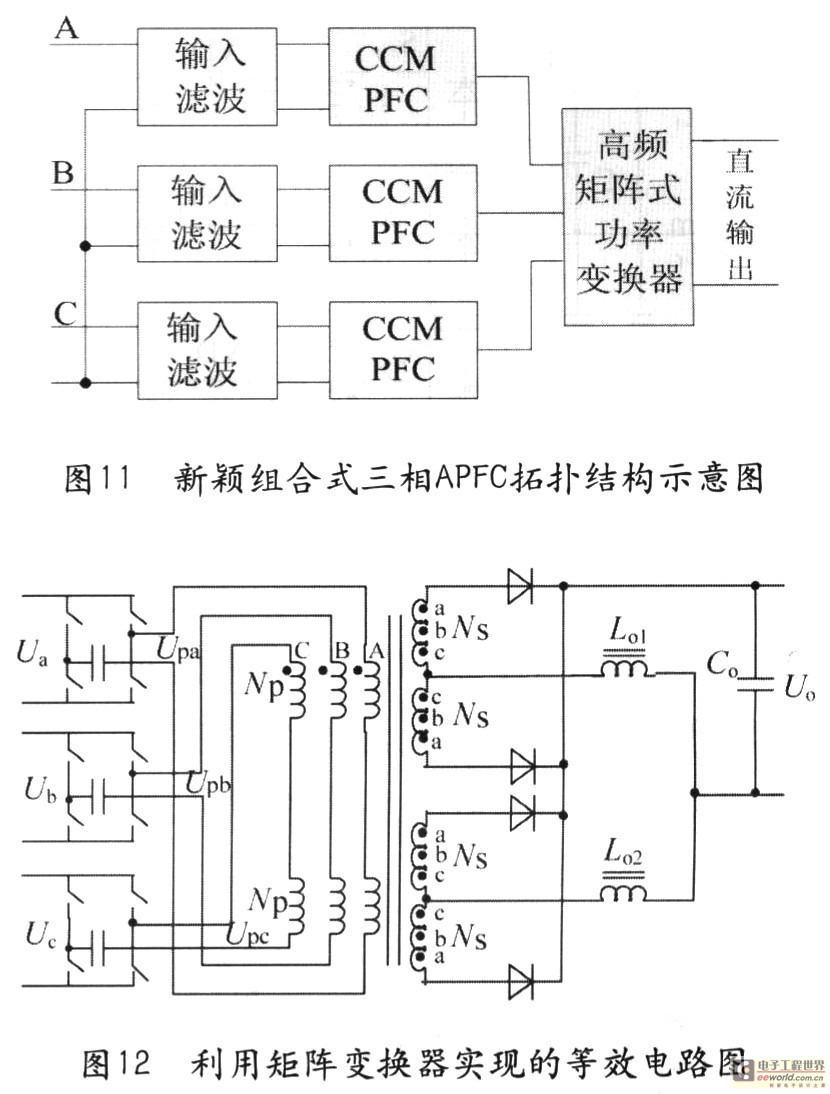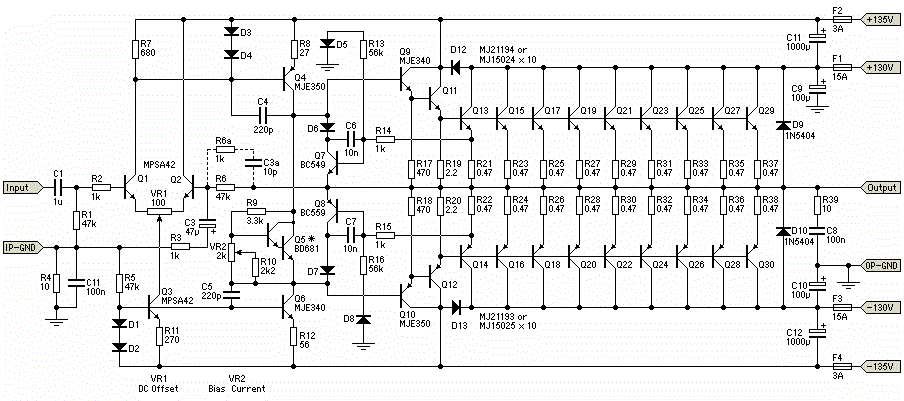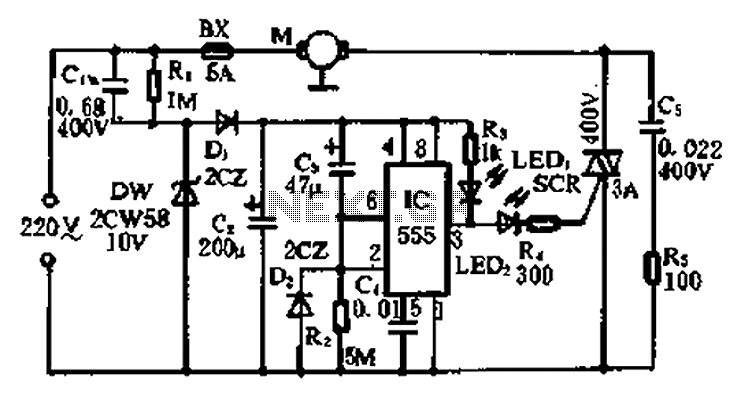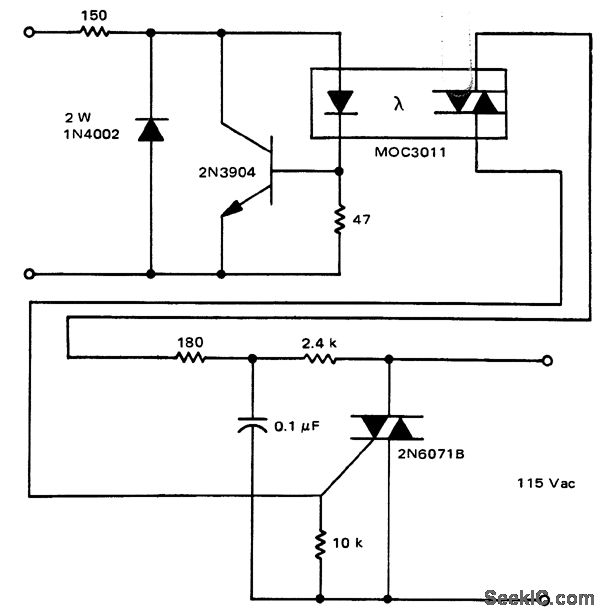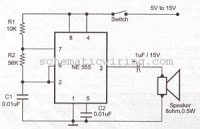
Medium power FM Transmitter Circuit With BC547 Transistor
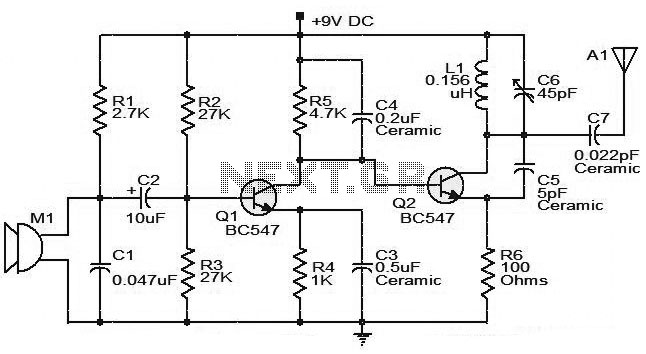
The moderate power FM transmitter circuit employs two transistors. The voice signals picked up by the microphone will be amplified by the transistor.
The described FM transmitter circuit utilizes two transistors to facilitate the modulation and amplification of audio signals. The circuit begins with a microphone that captures voice signals, which are then fed into the first transistor configured as a common emitter amplifier. This configuration provides initial amplification of the audio signal, ensuring that it is strong enough for further processing.
The amplified audio signal is then fed into the second transistor, which serves as an oscillator. This transistor is configured to modulate the audio signal onto a carrier frequency, typically within the FM band. The modulation process involves varying the frequency of the carrier wave in accordance with the amplitude of the audio signal, resulting in an FM signal that can be transmitted over the air.
The circuit may include additional components such as resistors and capacitors to stabilize the operation of the transistors and to filter the output signal. An LC tank circuit may also be incorporated to determine the transmission frequency and enhance the quality of the emitted signal. The output of the second transistor is then connected to an antenna, which radiates the modulated signal, allowing it to be received by FM radios within range.
Overall, this moderate power FM transmitter circuit offers a straightforward design for transmitting audio signals wirelessly, making it suitable for various applications, including personal broadcasting and educational demonstrations. Proper attention to component selection and circuit layout is essential for achieving optimal performance and signal clarity.The moderate power FM transmitter circuit employing two transistors.The voice signals picked by the microphone will be amplified by the transistor .. 🔗 External reference
The described FM transmitter circuit utilizes two transistors to facilitate the modulation and amplification of audio signals. The circuit begins with a microphone that captures voice signals, which are then fed into the first transistor configured as a common emitter amplifier. This configuration provides initial amplification of the audio signal, ensuring that it is strong enough for further processing.
The amplified audio signal is then fed into the second transistor, which serves as an oscillator. This transistor is configured to modulate the audio signal onto a carrier frequency, typically within the FM band. The modulation process involves varying the frequency of the carrier wave in accordance with the amplitude of the audio signal, resulting in an FM signal that can be transmitted over the air.
The circuit may include additional components such as resistors and capacitors to stabilize the operation of the transistors and to filter the output signal. An LC tank circuit may also be incorporated to determine the transmission frequency and enhance the quality of the emitted signal. The output of the second transistor is then connected to an antenna, which radiates the modulated signal, allowing it to be received by FM radios within range.
Overall, this moderate power FM transmitter circuit offers a straightforward design for transmitting audio signals wirelessly, making it suitable for various applications, including personal broadcasting and educational demonstrations. Proper attention to component selection and circuit layout is essential for achieving optimal performance and signal clarity.The moderate power FM transmitter circuit employing two transistors.The voice signals picked by the microphone will be amplified by the transistor .. 🔗 External reference
